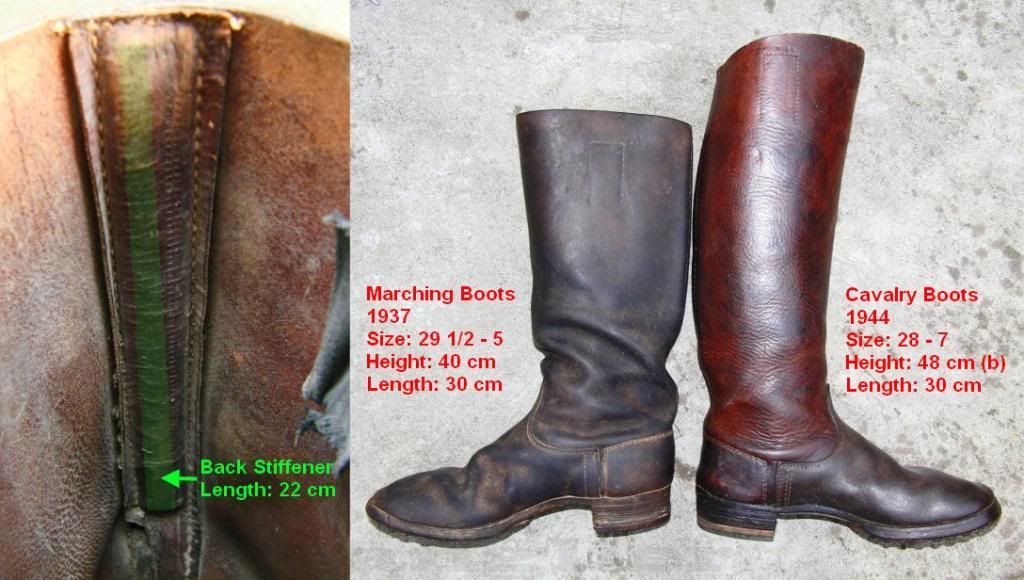Just to add a data point to the discussion on dimensions, here is a side-by-side comparison between a pre-war tall marching boot and a late-war cavalry boot with the spur-rest chopped off (though what's left of it can still be seen).

Both boots have exactly the same foot length. What's most interesting to me is that the pre-war marching boots were made with a back stiffener, like the one found on expensive dressage boots, which allows the shaft to maintain its sharp profile even after hevy use. I believe this foppish feature was never part of the cavalry boots for some odd reason, even though it originated from riding boots (so the cut-downs won't have it), and if I am not mistaken, it was also omitted from the shortened maching boots that came later.
It looks to me like the OP boots may not have a stiffener. If these are indeed mint condition marching boots, it might mean that the stiffeners were already gone by 1939.
Is there any sign of a chopped off spur rest at the top of the heel? It's pretty hard to miss.
Gene T

Both boots have exactly the same foot length. What's most interesting to me is that the pre-war marching boots were made with a back stiffener, like the one found on expensive dressage boots, which allows the shaft to maintain its sharp profile even after hevy use. I believe this foppish feature was never part of the cavalry boots for some odd reason, even though it originated from riding boots (so the cut-downs won't have it), and if I am not mistaken, it was also omitted from the shortened maching boots that came later.
It looks to me like the OP boots may not have a stiffener. If these are indeed mint condition marching boots, it might mean that the stiffeners were already gone by 1939.
Is there any sign of a chopped off spur rest at the top of the heel? It's pretty hard to miss.
Gene T

 Many times this was done at company level, so I don't think they would have any interest in the sole looking nice. There are a lot on sewing machine marks all around also, and I don't think it is bad either. We will never know who nailed these boots or when.
Many times this was done at company level, so I don't think they would have any interest in the sole looking nice. There are a lot on sewing machine marks all around also, and I don't think it is bad either. We will never know who nailed these boots or when.
Comment